Once upon a time, pretty much all pickup trucks had two doors, and only one row of seats. Then a few manufacturers started offering “crew cab” trucks, with a second pair of doors and a rear seat, but you still didn’t see very many of them; they were mostly used as work trucks, and therefore held actual crews, not families. Nowadays, that situation has reversed: four-door trucks are the default, and if you want a single-cab, you have to go talk to the fleet sales manager, and you’ll probably only be able to get it in white.
Today we’re going to look at a couple of small trucks (and yes, I’m being generous with the term “truck” in one case) from during the changeover years. They represent very different ways of going about it, but functionally, they both serve more or less the same purpose: they’re built for daily car duty and occasional truck use. And they both have somewhat weird engines for trucks.
But before we look at those, let’s get Friday’s foregone conclusion out of the way. The old Forest Service Dodge won easily. Of course it did. It was up against a Corvette with no title and two other junkers that didn’t even run. Yeah, it’s more expensive than any of them, but it’s also the only complete, viable vehicle that you could buy, drive home, and put straight into service. And it’s by far the coolest looking of the bunch.
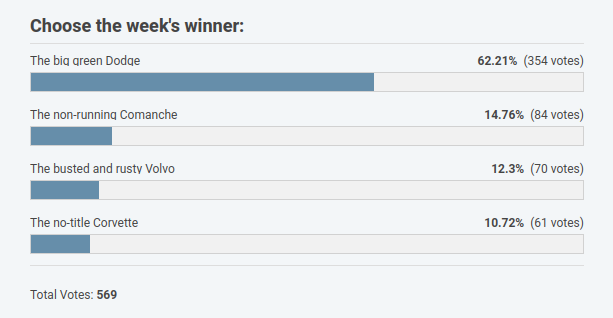
Now that that’s out of the way, let’s look at a truck, and a vaguely truck-shaped object.
2003 Subaru Baja – $4,590
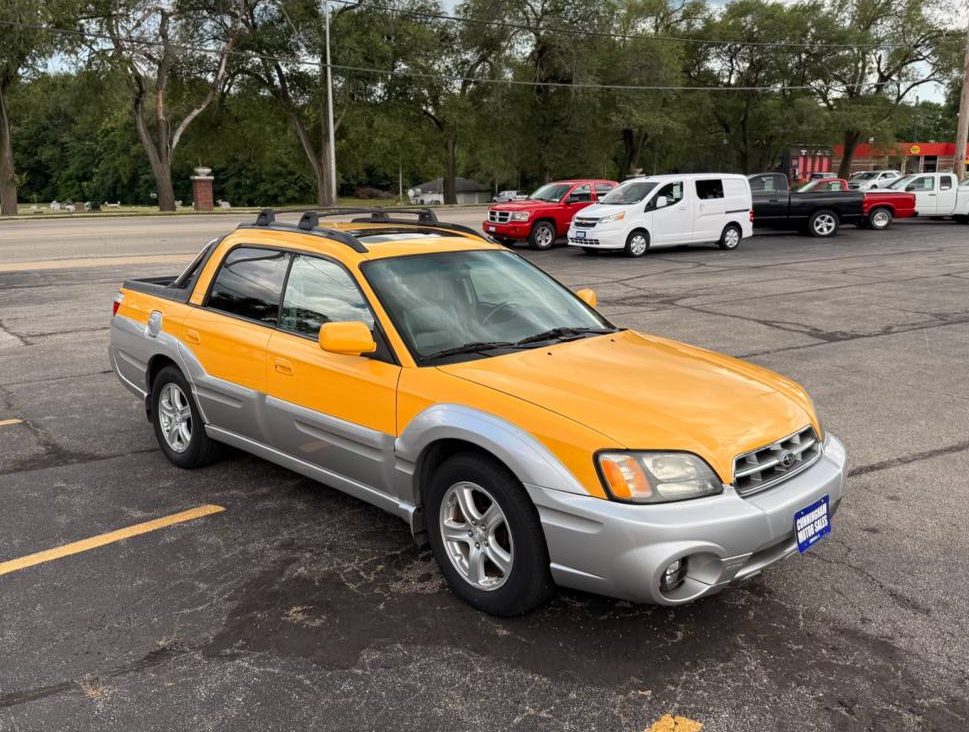
Engine/drivetrain: 2.5-liter OHC flat 4, four-speed automatic, AWD
Location: Urbana, IL
Odometer reading: 222,000 miles
Operational status: Runs and drives well
We’ve all seen one at some point: Someone has an old station wagon, and something compels them to cut the back portion of the roof off and make it into a truck. Sometimes it works, sometimes it doesn’t. When the factory does it, you get what we have here. This isn’t the first time Subaru has created a ute from a passenger car, of course: for a decade or so in the 70s and 80s, it offered the BRAT, a clumsy acronym for “Bi-Drive Recreational All-Terrain Transport.” In Australia (and other places as well, I think?) it was called the Brumby, which I always thought was a friendlier name. For this second offering, Subaru named its ute the Baja, after part of Mexico, or maybe after the famous race that’s held there, or maybe a flavor of Mountain Dew. I’m not entirely sure.
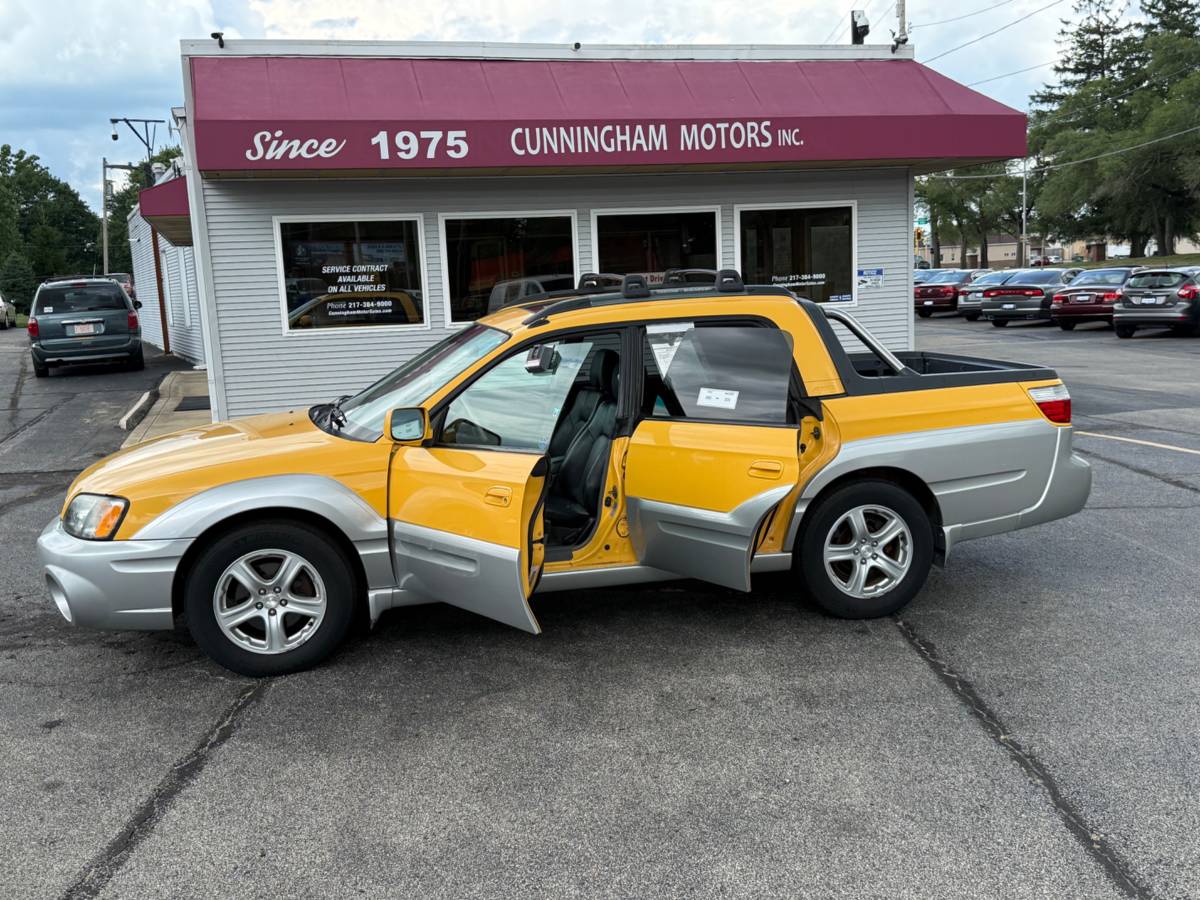
The Baja’s platform and basic mechanical spec was the same as the Outback, which in 2003 meant a 2.5 liter version of Subaru’s famous flat-four, driving all four wheels through, in this case, a four-speed automatic. I know; I’d rather have a manual too. Like the Outback, it doesn’t really have much off-road capability unless you jack it up, but like any AWD Subaru, it’s a beast in the snow. This one runs and drives well, the seller says, with well over 200,000 miles to its name.
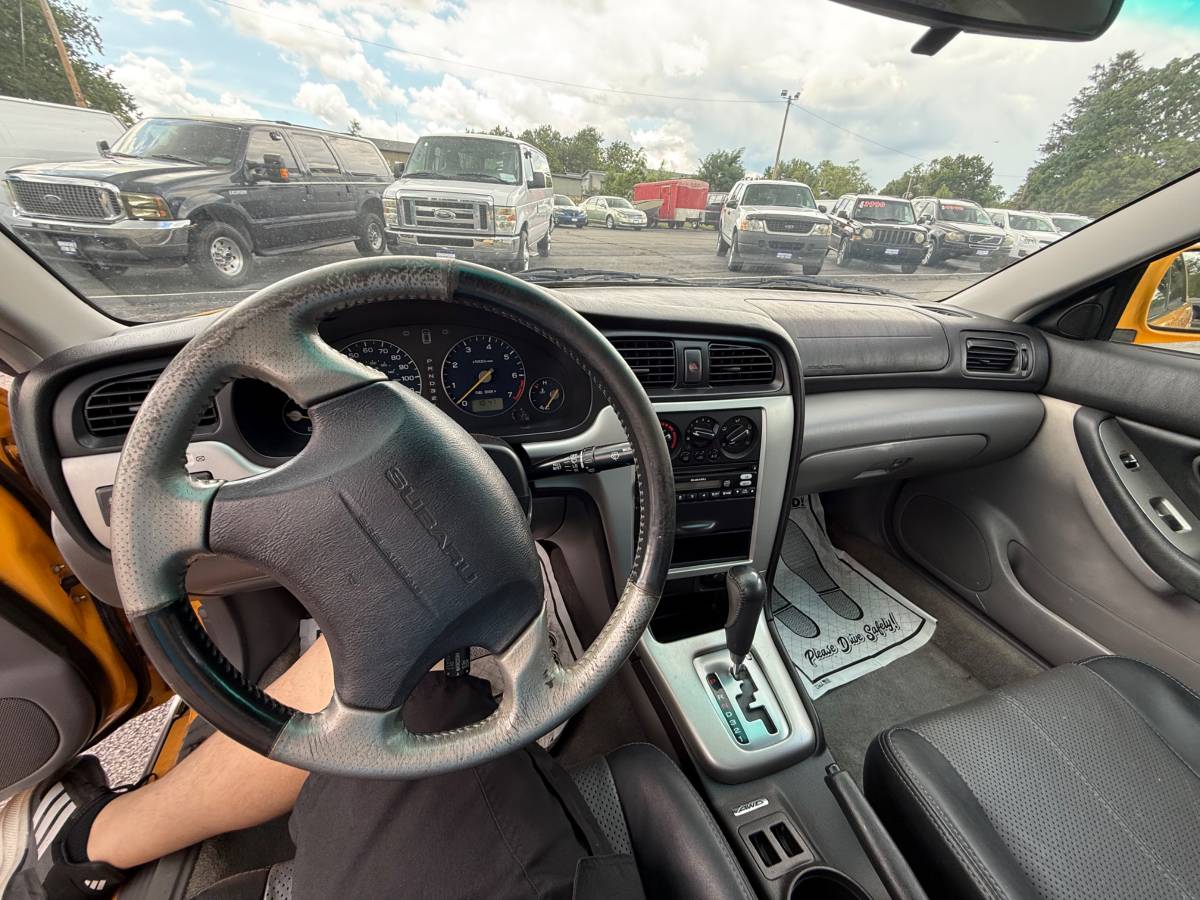
It’s pretty much an Outback on the inside as well, except for the rear end. The Baja’s seats fold down, and a little hatch can be opened to stick long stuff through from the bed. The rear window is fixed, so it’s not as versatile as the “midgate” on a Chevy Avalanche, which opens up completely, but it’s enough of a pass-through for lumber or an IKEA Billy bookcase or something. This one is in good condition inside, with only a little wear and tear, and the seller says the air conditioning is nice and cold.
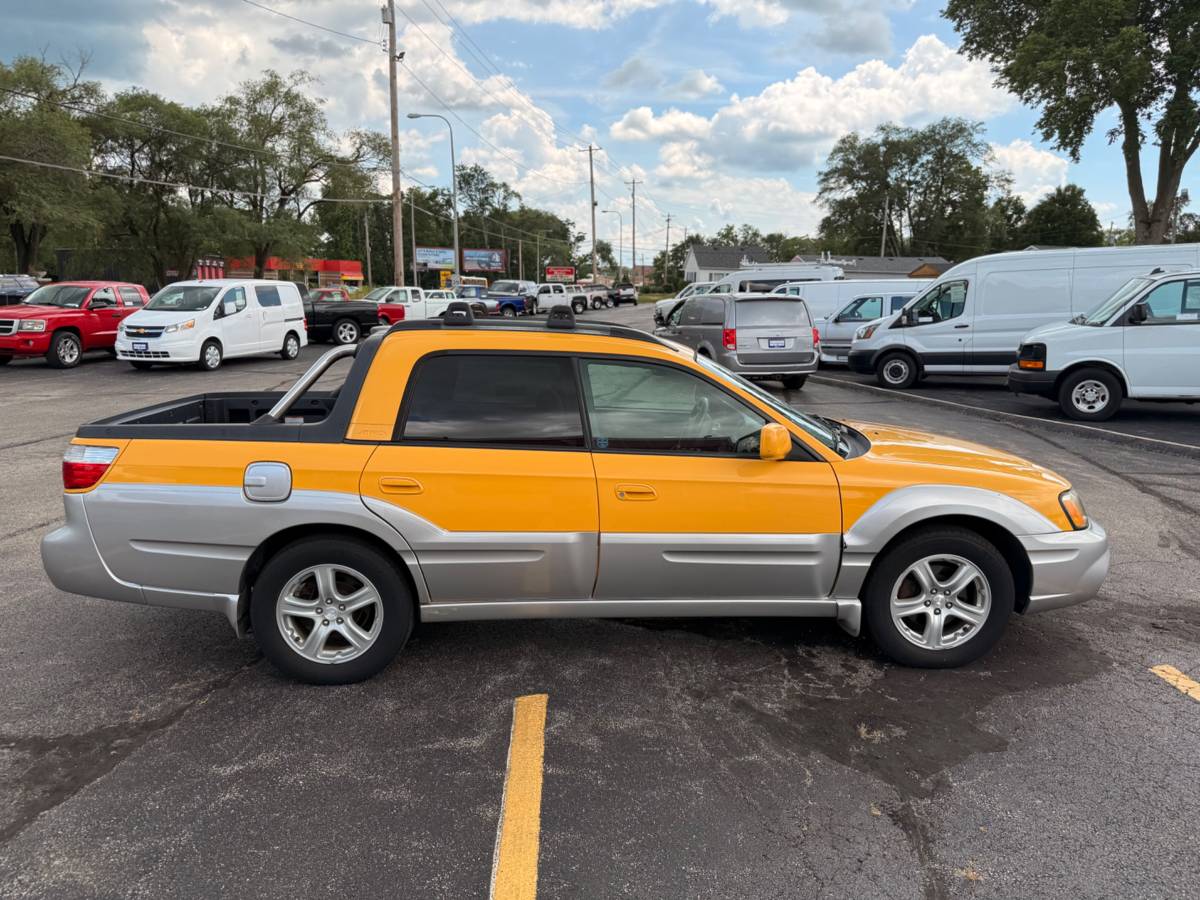
The early 2000s were the era of silver lower cladding, and I never thought I’d miss it, but it looks so much more interesting than today’s flat-black fender bulges. It makes a nice contrast against this Baja’s yellow paint, too. The only problem is that the cladding can hide rust, which is a concern in central Illinois. You’d be wise to take a peek underneath and make sure it’s all ship-shape.
2005 Chevrolet Colorado LS – $3,000
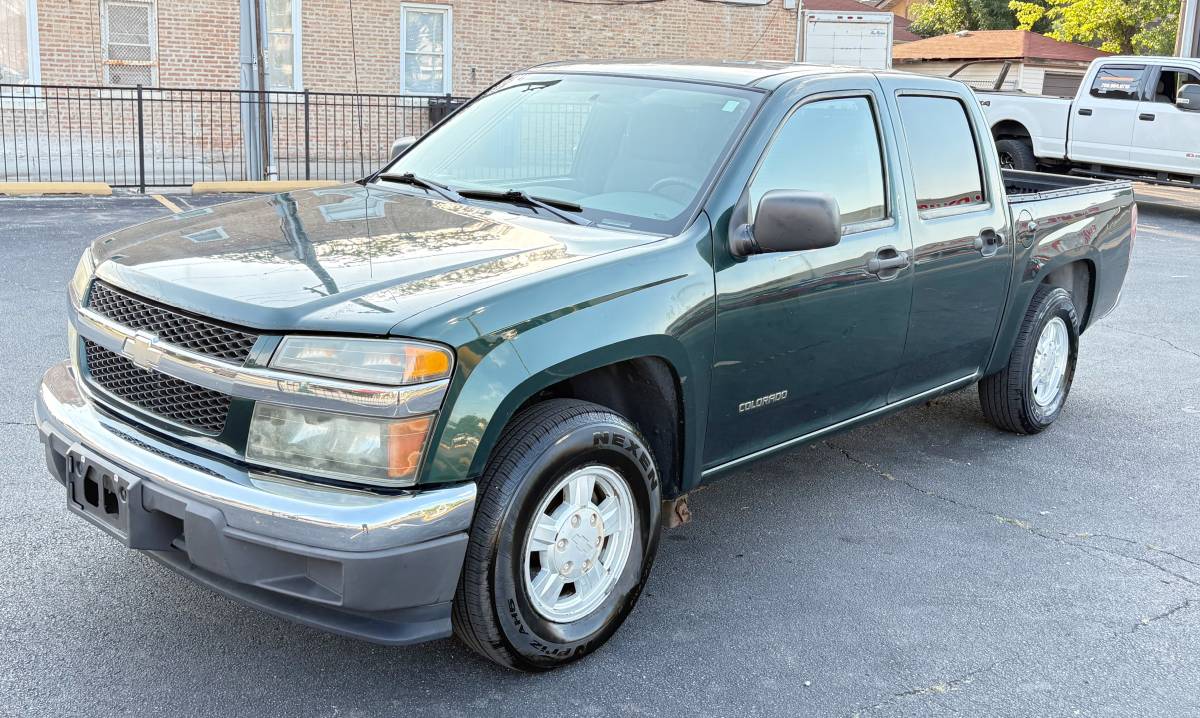
Drivetrain: 3.5-liter DOHC inline 5, four-speed automatic, RWD
Location: Chicago, iL
Odometer reading: 166,000 miles
Operational status: Runs and drives well
General Motors product lines rarely stay in production for the correct amount of time. They either get canceled right when they start to get good, like the Corvair and the Fiero, or they cling to life for far too long, until they are hopelessly outclassed by their competitors, like the Cavalier, and this truck’s predecessor, the S-10. The Colorado and GMC Canyon were a clean-sheet design, hoping to claw back some sales from Toyota and Nissan, which both offered trucks that made the S-10 look like an ox cart.
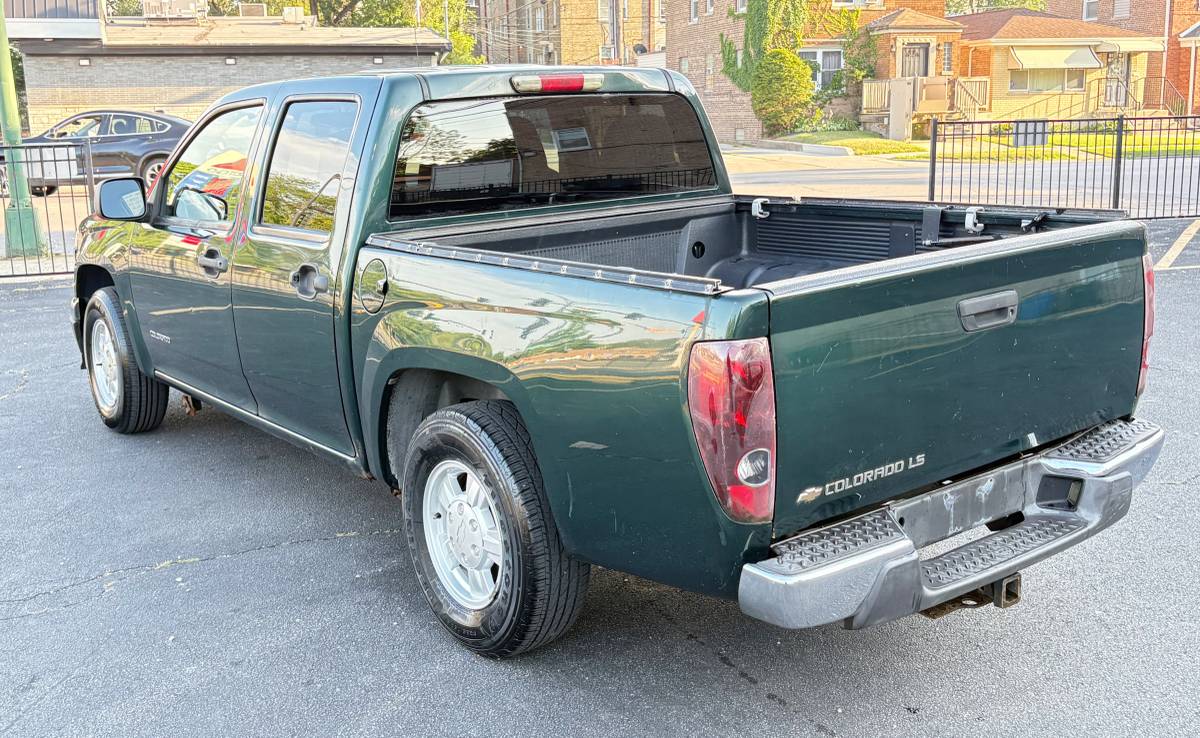
Not only were the chassis and body new, but the engines were as well. GM finally put the old 2.2 and 4.3 liter engines out to pasture in favor of its new “Atlas” inline engines, available with either four or five cylinders. This one has the five-cylinder, an odd choice for a truck; the only other five-cylinder truck I can think of is the old Mercedes Unimog. (If you know of another, please mention it in the comments.) It puts out more power than the old 4.3 V6, but less torque, and drives the rear wheels through GM’s 4L60-E automatic. The seller claims in the ad that this one is 4WD, but I doubt it; it doesn’t sit high enough, and I see no sign of a transfer case lever or a button on the dash.
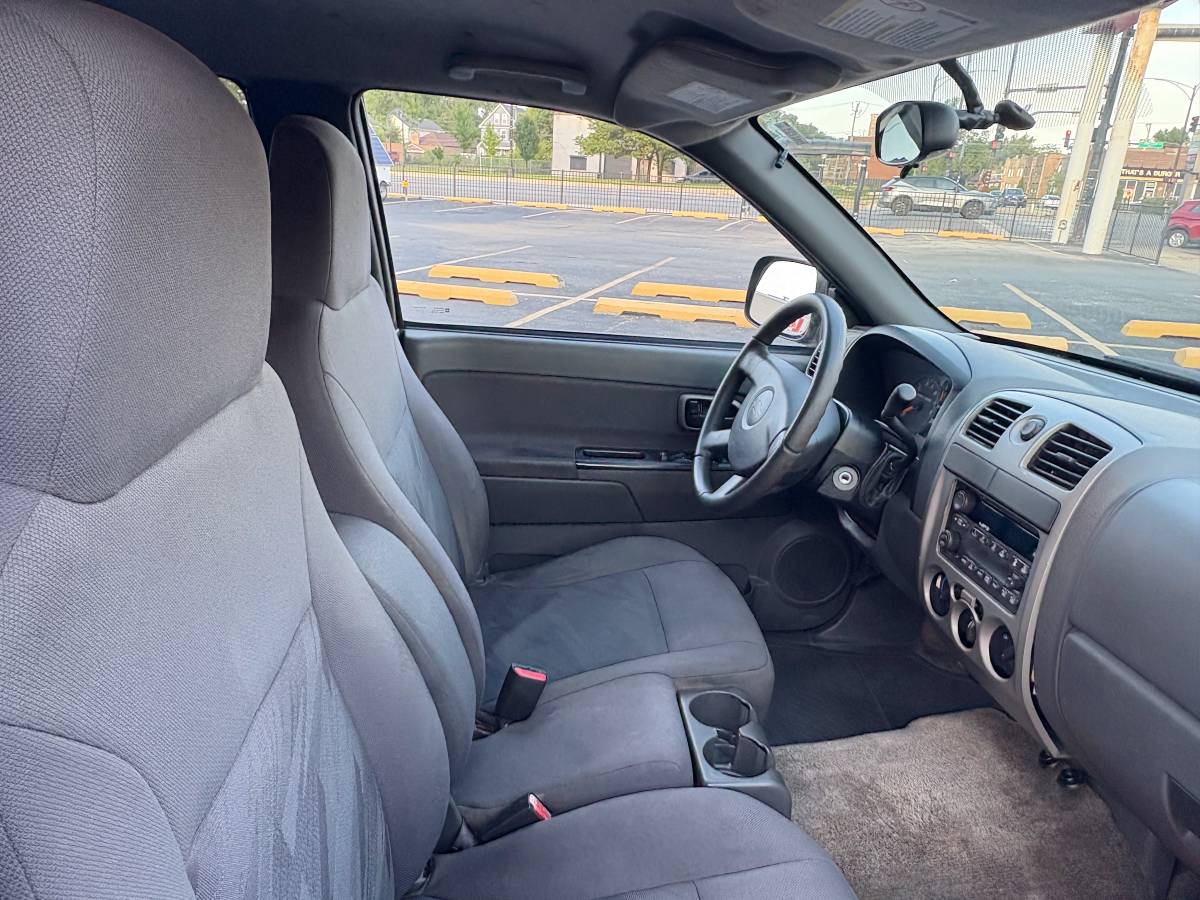
This is right before trucks started to get fancy inside. It has power windows and air conditioning and whatnot, but other than that it’s pretty basic. It’s also refreshingly open and airy compared to modern interiors. Where did all that space go? It’s in good condition for the mileage, though it looks like a clip or two is missing from the center dash trim. But it wouldn’t be a GM product if every piece of plastic was properly aligned.
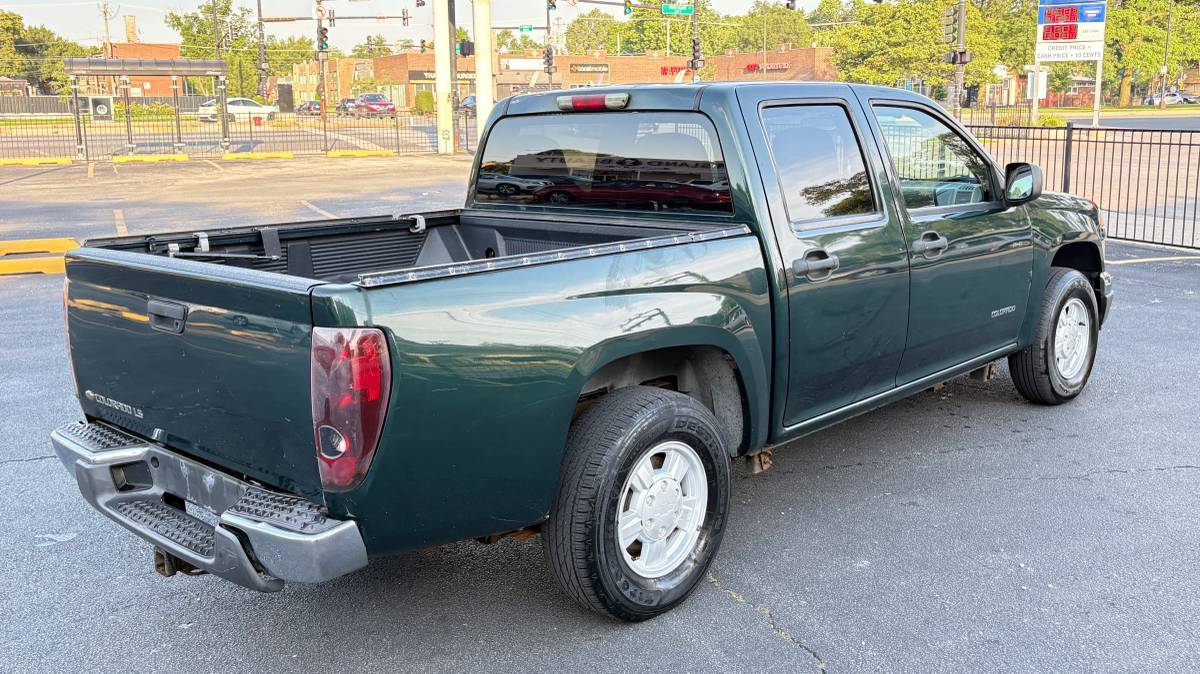
Outside, it looks pretty good, except for a slightly bent rear bumper and one missing rear door handle. It also looks like it used to have a tonneau cover; the frame is still there, but the cover itself is gone. And I just noticed some brackets hanging down on the sides – maybe it had running boards at one time as well? Strange that they would take all that stuff off. It’s probably a good idea to do a rust check on this one, too.
This is another one of those situations where your intended use will probably make the choice for you. If you want a commuter, the Baja and its higher fuel economy is probably the better choice. If you want to pull a little travel trailer, you’ll probably want the torquier, body-on-frame Colorado. Or, as always, you can just choose which one you like better. I’ll leave it up to you.

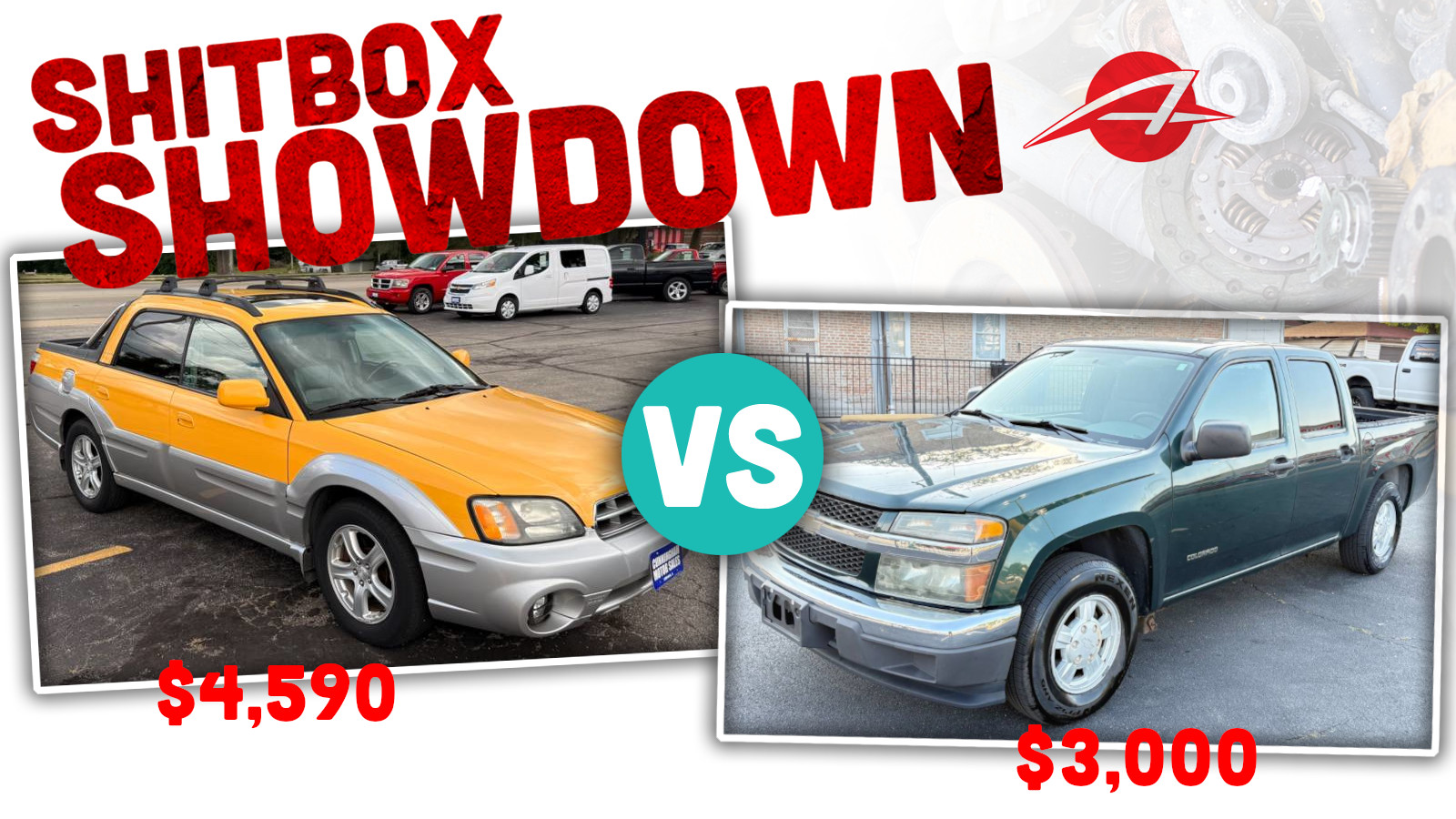







I had a 2006 Baja Turbo automatic. Terrible seats
I don’t feel a burning desire to posses either vehicle, which is nice for a change. 😉
Assuming they’re both in more-or-less equal condition re: rust, etc… the Chevy is probably the safer bet cost-of-ownership wise and certainly the one to pick if you actually want to haul bulky/dirty stuff on the regular. However, since I don’t have to do that, and often make less rational choices, I chose the Subaru.
I actually thought that Bajas went for a bit more than this $5K asking price, but maybe my perception is slanted due to used cars costing more here in SoCal than they do in the midwest for the same exact thing (ours usually have less rust, but only if they’ve lived here their whole life). For some reason, I thought the Baja was Impreza based, but apparently it’s made from an Outback, which itself is made from a Legacy if memory serves correctly. I always liked the Legacy, even if it never gets the love that the Outback does/did.
In any case, the chrome yellow Subie with kind of silly silver claddding just sort of exudes cool in a late 90s/early oughts way, even if it’s a cool that appeals only to a very finite demographic. Which I guess includes me.
Now that I’m thinking about it, I have to admit that I do feel a smoldering desire to own the Subie, so please disregard my opening comment. 😉
PS: not that anyone asked, but I just ordered my first cheap borescope today via Amazon (of course) for about $30., so I can look inside the body panels of my 240 wagon before sealing the (already treated) rust holes. The scope I bought can’t save images to a USB/SD card or anything, but I can live w/o that functionality for the price, assuming it works OK otherwise. If it turns out to be good, I’ll post details/a link.
As the owner of a 2012 Colorado Extended Cab 4×4, the 6ft bed and the I5 I can say that in 144k miles I have had no real problems with it. Bought used with 30k on it and it just keeps rolling along. No engine problems, no transmission problems and so far no signs of rust except for the fuel pump mounting plate on top of the gas tank which was hard to find a good replacement for. Pulls 20mpg without any fuss. Only real complaint was the ridiculous exhaust manifold/catalytic converter setup that cost a bundle to replace when the exhaust manifold cracked even though the catalytic converter was fine. It’s fire engine red too 🙂
On second thought, the CD player in the factory radio no longer works 🙁
Actually the Baja looks surprisingly rust free even on the surface I wonder if it is from out of state
The Baja just looks like more fun to drive.